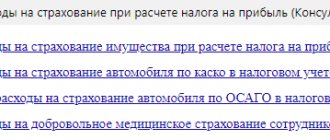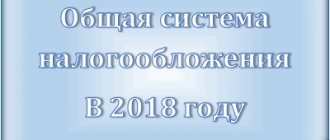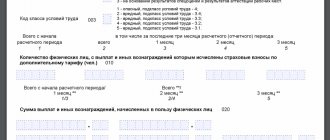12/19/2015 20 326 2 Reading time: 9 min. Rating:
Author
: Konstantin Bely
Today we will talk about direct and indirect taxes . I will talk about what direct taxes are, what indirect taxes are, how they differ from each other, what types they are, and I will also consider the most popular types of taxes belonging to both groups. I think that this is necessary to know not only for those who run or plan to open their own business, but also for absolutely every person, just for general development, in order to understand where and for what they are overpaying, and what is being deducted from them.
So, all existing taxes are divided into two large groups: direct and indirect taxes. The main criterion for this division is the moment at which the tax is calculated and paid, as well as the relationship between the subject and the object of taxation. Let's look at each of these groups separately.
The concept of tax and types of taxes in the Russian Federation
A tax is a financial obligation of an individual or legal entity to the state, which must be fulfilled within the time limits established by law.
Taxation resolves issues of income distribution between the state, legal entities and individuals. Taxes reflect the obligation of legal entities and individuals to take part in the creation of financial resources of the state and, acting as an instrument of redistribution, help eliminate emerging violations in the system of distribution of financial resources, restrain or stimulate the development of a certain form of activity.
In modern conditions, taxes are an effective and important part of the government’s financial policy.
Basic principles of taxation:
- uniformity - a comprehensive, unified approach of the state to persons paying tax, from the point of view of the unity and universality of taxation rules;
- certainty - the taxation procedure is strictly established by the relevant legislation, so the deadlines for paying taxes and their amounts are known in advance.
Modern tax system in the Russian Federation
The basis of the state tax system is the ratio of direct and indirect taxes. For an optimal ratio, it is important that their shares are equal. The amount of taxes must strictly correspond to the real income of legal entities and individuals. By equalizing direct and indirect taxes, the situation is stabilized and balance is achieved among various market segments.
Today, the taxes payable by individuals are less than those for businesses. Direct taxes are almost two times less than indirect taxes. In order for the fiscal system to be the most optimal, taking into account the interests of all parties, it is important to achieve an equal contribution of each type of tax.
In world practice, there are several systems that reflect the ratio of direct and indirect taxes. The fiscal system of the Russian Federation is mainly a Latin American model (based on indirect taxes to the state budget; with rising prices and inflation, tax deductions increase), which has individual elements of the Eurocontinental model (with a high level of deductions for social development and insurance). The share of fees from business activities is 70%.
Pros and cons of PN and CN
Today in Russia there is a move towards a transition to a mixed model, where the ratio of these two types of fees will be almost equal.
Both categories of tax payments have both advantages and disadvantages . It will be easier to navigate if this information is given in a table:
| Characteristics | Direct taxes | Indirect taxes |
| Advantages |
|
|
| Flaws |
|
|
Today in Russia there is a move towards a transition to a mixed tax model, where the ratio of these two types of fees will be almost equal. In this way, it will be possible to smooth out the tax burden, eliminating the dependence of the state budget on a certain type of taxes. But for now, direct mandatory payments from individuals prevail over those paid by organizations. But the share of indirect taxes in the total volume is about 2 times higher.
Who are taxpayers
A taxpayer is one who pays taxes. As you know, taxes affect almost every area of our lives, so it is impossible to find a person who does not pay them.
The calculation of taxpayers-motorists is made on the basis of information available about their transport. They go to the tax service after the car is registered with the traffic police. Legal entities must pay the duty and advance payment themselves, without waiting for the tax office to remind you.
Tax for individuals is calculated according to the formula - the tax base is multiplied by the corresponding rate. From this comes the cost that must be paid to the taxpayer.
For legal entities, everything is calculated differently. During the year, an advance payment is made, and the tax itself is calculated from it. When submitting a report, the organization must make a payment.
Tax reporting for VAT
VAT payers are required to submit a tax return quarterly. Its form was approved by Order of the Federal Tax Service dated October 29, 2014 No. ММВ-7-3/ [email protected] The declaration must be submitted by the 25th day of the month following the reporting quarter. Tax transfers for the quarter are made in equal installments in three payments no later than the 25th day of each of the three months following the reporting quarter. If the deadline for submitting a report or transferring a payment to the budget falls on a weekend or non-working holiday, then the deadline is postponed to the first next working day (Clause 7, Article 6.1 of the Tax Code of the Russian Federation).
Submission of the report is possible only in electronic form via telecommunication channels (TCS). To do this, the taxpayer must enter into an agreement with the TCS operator, obtain an electronic digital signature, and connect the appropriate software. An exception to this rule is made only for tax agents who are not taxpayers.
Legal documents
- Article 13 of the Tax Code of the Russian Federation. Federal taxes and fees
- Article 164 of the Tax Code of the Russian Federation. Tax rates
- Federal Law of August 3, 2018 N 303-FZ
- Decree of the Government of the Russian Federation of December 26, 2011 N 1137
- Order of the Federal Tax Service of Russia dated October 29, 2014 N ММВ-7-3/ [email protected]
- Article 6.1 of the Tax Code of the Russian Federation. The procedure for calculating the deadlines established by the legislation on taxes and fees
How to become a taxpayer
Individuals and legal entities become taxpayers if:
- An object that arose as a “transaction” is fully taxed, that is, the payer will have to pay for it. An example is real estate and income generated from sales or services provided through this real estate.
- There is a status according to which a taxable object is formed. An example is imputed income. It is formed when the organization issues UTII.
- Uses any resources. For example, extracts minerals, or something else.
Direct tax is paid by both individuals and legal entities. They must deposit the amount themselves, without shifting their responsibilities to another person.
Indirect taxes: types and features
The formal payers of such fees are individual entrepreneurs, and the actual payers are third parties (consumers of goods produced, services provided or work performed).
The amount of the fee is already included in the cost of the product produced, service provided or work performed. Tax deduction by the seller occurs after he receives the transaction, when the buyer pays for the products.
The distinctive features of indirect fees are:
- efficiency. Collections must reach the state within a short period of time (for example, the time frame for VAT is from 1 to 3 months);
- high collection rate. This type of payment is an integral part of tax collections, so identifying the resulting violations or deviations is not particularly difficult. The reason for this is the constant monitoring of trade relations by government authorities and tax services of the constituent entities.
Indirect taxes include:
VAT (value added tax). Added value is the amount that plays a major role in generating the seller’s profit. It is this that is subject to taxes by the state and is of great importance for the economy of any developed country. For example, in the Russian Federation, VAT accounts for about 40% of all tax collections, which significantly exceeds the amounts received from direct collections. An additional advantage is that VAT is paid on every transaction. At the same time, the number of intermediaries through which the product passed before passing to the final consumer does not matter.
The VAT rate is affected by the type of product. Most products are taxed at a rate of 18%, certain categories (printed publications, medicines and goods intended for children) - 10%. There are also exceptional cases when VAT is not paid:
- when exporting goods;
- the company provides passenger transportation services;
- the organization independently sells its products;
- The company provides services in the field of housing and communal services.
At the same time, the list of cases that exempt the taxpayer from this type of fee is strictly controlled and established by the state. Regional authorities cannot change this order.
Excise tax . Also included in the final cost, but only applicable to the production area.
Customs duty , which is collected at the border of a country. Its basis is the movement of goods outside the state.
Difference between direct and indirect taxes
Both types are tax liabilities. The differences are presented in the table.
| Criterion | Tax | |
| Straight | Indirect | |
| Who is the taxpayer? | FL, YUL | A consumer purchasing products manufactured by a sole proprietor or legal entity. |
| How is the relationship with the state? | Payments are made directly to the state. | Taxes are calculated through intermediaries, who are the owners of organizations or manufacturers. |
| What is the object of taxation? | All property of the taxpayer (real estate, transport), his income, categories of minerals. | Manufactured goods, services provided, work performed intended for sale. |
| What affects the amount of tax? | The amount of income received from various types of activities, the current financial situation, etc. | Price for goods produced or services provided, tariff rates, categories, etc. |
| How do they depend on financial activities? | Direct dependency | No dependency |
| How is the calculation carried out? | Complex, involves division into several categories. | Simple, carried out using special formulas. |
| How does participation in price formation take place? | The price depends on the specific production. | They influence the reduction or increase in the cost of goods, services, and works. |
| What is the degree of openness? | Open payments | Closed payments, consumers have no idea about the amount of taxes paid to the state treasury. |
The basis of the state tax system is the ratio of two types of fees. From the point of view of the optimal ratio, it is necessary that their shares be equal. Then all participants will not be disadvantaged, regardless of the changes that occur. In addition to the fact that the amount of taxes must correspond to the income level of each participant, it is necessary to take into account the development of the country from an economic point of view, as well as take into account all the needs that are relevant in a particular time period.
The modern taxation system in the Russian Federation involves a mixture of direct and indirect taxes. Thus, by equalizing them, stabilization occurs and equilibrium of different market segments is achieved.
It should be noted that the tax fees that were payable by individuals for 2016-2017. less than for enterprises. Indirect taxes are almost twice as high as direct taxes. This distinctive feature is typical only for economically developed countries.
Comparative review
To fully understand how PN and CN differ, you need to do a comparative analysis of them:
| Sign | Direct taxes | Indirect taxes |
| Entity accepting the tax burden | Directly the taxpayer | Buyer |
| Coordination with the state | Direct | Through an intermediate person (seller, manufacturer) |
| Taxable object | Personal property, various types of income | Products sold, services provided |
| Indicators affecting the amount of tax | Amount of income or profit, marital status, type of activity, etc. | Tariffs for services and work, price of products and their type |
| Relationship with financial and economic activities | Straight | There is no |
| Difficulty of counting | Quite difficult | Lightweight |
| Collection rate | Complex | Fast |
| Role in pricing | Accrued at the production stage | Included in the price upon sale |
| Openness | The taxpayer knows how much he will have to pay | The buyer sometimes does not know that he is overpaying due to a trade markup |
The ratio of direct and indirect taxes
Determining the degree of influence of different types of taxation in the Russian Federation is necessary not only to understand in which direction the economy is developing, but to determine the possibility of using the experience gained over the years in various economically developed countries of the world. It is quite clear that the application of the appropriate system should take into account the national characteristics of the state, the mentality of its citizens, and the ways of consuming goods, works and services. In addition, the current structure of the tax system, which forms the national basis for fiscal policy, must be taken into account.
In order for the fiscal system to be as flexible as possible, taking into account the interests of all parties involved, it is necessary to achieve an equal contribution from each type of fee.
In world practice, there are currently four main systems that show the ratio of direct and indirect taxes:
- Anglo-Saxon. The main share comes from direct fees, with indirect fees accounting for a small part. For example, in America, 44% of all revenues are income taxes;
- Eurocontinental. It is characterized by a high level of contributions to support social development and insurance. The main part of payments is allocated to indirect taxes;
- Latin American is based on indirect payments to the budget. At the same time, rising prices and inflation processes lead to an increase in tax deductions. Therefore, this system is actively used when the economic situation in the country is unstable and to protect the state from the financial crisis;
- mixed is used by developed countries to expand the diversification of the revenue system, thus smoothing out the impact of specific types of fees. The main objective of such a model is to increase direct collections, but the predominant share should come from business revenues rather than income taxes.
As for the Russian Federation, its fiscal system is more consistent with the Latin American model with minor elements of the Eurocontinental one. At the same time, the share of fees from business activities accounts for about 70%. It is quite natural that this is burdensome for private entrepreneurs. However, it is impossible to make a shift and shift part of the tax burden to individuals. This is due to the low purchasing power of the population. The main reason for the current situation is the low degree of efficiency of social production.
Types of indirect taxes
- Excise taxes are calculated as a percentage of the price at which the goods are sold. In the Russian Federation there are excise taxes on fuel, tobacco and alcohol.
- Customs duties - on the import and export of goods from abroad. They are divided into export, import and transit.
- Value added tax - paid by buyers, already included in the price of the product, is 20%.
- Fiscal fees - fees for issuing licenses, issuing permits, state fees, and other fees.
Excise taxes
This is a fee already included in the price of the goods; the list of such goods is approved by the state. There is no single rate; the size is determined individually for each category of goods. The list of excisable goods is established in the Tax Code. The reporting period is equal to a month.
Excise taxes are included in the price:
- fuel;
- natural gas;
- alcohol;
- tobacco;
- ethyl alcohol;
- cars and motorcycles.
VAT
Valid throughout the country. The most common tax. Brings more than 40% of revenue to the treasury. Manufacturers include a margin—added value—in the price of the product. The tax period is quarterly. The basic rate is 20%. For a number of preferential categories it is reduced and amounts to 10%. For example, a preferential rate applies to food, children's and medical products.
Sometimes the rate can be equal to 0. Example: export companies, international transport.
A number of goods are exempt from VAT. The full list contains Article 149 of the Tax Code of the Russian Federation. For example, expenses for preschool education and funeral services are not subject to VAT.
Types of VAT:
- outgoing - the seller issues it to the recipient and receives it from him;
- incoming - sellers pay it to their suppliers, the amount of outgoing VAT is reduced by it and accepted for deduction.
Object of taxation:
- sale of goods and services;
- transfer of property rights;
- carrying out construction work for one’s own needs;
- import of goods into the territory of the Russian Federation.
Government duty
A fee levied on citizens and organizations when contacting authorities for carrying out legally significant actions. It is also paid by defendants in courts if the decision was not made in their favor and the plaintiff is exempt from paying the fee.
The fee is paid:
- when applying to judicial authorities;
- when performing notarial acts;
- when issuing documents and their duplicates;
- affixing an apostille;
- for other legal actions.
Customs duties
These are fees provided for entrepreneurs importing products into the Russian Federation from abroad. There is no single rate; it is determined depending on the existence of agreements between countries and customs legislation.
Transport tax indirect
An indirect tax is formed by adding a surcharge to the existing prices of goods and services.
This is how they appeared:
- excise taxes are a fixed fee, the value of which is established by the state in accordance with the type of product;
- VAT – value added tax; here the object of taxation becomes the sale of goods and services.
VAT is charged on each product. In modern Russia, three types of VAT tax rates are used - 18%, 10% and 0%.
The tax is called indirect, since it is not paid by the owner of the product, but by third parties, that is, by the buyers of the product. Therefore, a legal entity, as a taxpayer, is obliged to collect indirect tax from buyers so as not to pay it from its own funds.
The payer can reduce his tax burden.
This happens as follows:
- VAT or Excise tax is included in the price of the goods. Thus, it is actually the buyer of the product who pays it.
- VAT and Excise duty is paid when purchasing goods from other suppliers. The subject himself pays for the goods sold, the calculation is calculated from their value.
To make it more clear, we can consider an illustrative example. A certain company, let’s call it Ostrov LLC, is engaged in the wholesale supply of pears. Price - 95.5 rubles per kg. In turn, the organization North-South LLC buys them taking into account 18% - this is VAT. That is, it turns out that pears already cost 112.69 per kg.
Then North-South LLC puts the fruit on the counter and sells it to customers at 132.97 per kg. This price includes the price for pears and VAT 18%.
pays a tax to the state in the amount of 17.19 rubles per kg of pears. Thus, the company can reduce the tax that was included in the price of the pears. That is, the company will owe the state 3.09 rubles per kg of pears.
If you pay attention to your own tax burden, it will be zero. It turns out that the cash inflow is 132.97, and the outflow is 95.5. This means that the difference is 37.47 rubles. This is exactly the amount the company would earn if it did not have to pay taxes. Thus, it is clear that the payer pays VAT indirectly, that is, without bearing a financial burden.
Direct taxes: types and features
Direct taxes include fees that the state levies on the income of citizens (salaries, profits, interest) or their property (land, real estate, vehicles). This proposed type of fee is paid by the citizen independently to the state treasury.
The system of direct taxes of the Russian Federation includes the following types:
from legal entities:
- at a profit;
- on property;
- to the ground;
- for business (for example, in the field of slot machines);
- to water sources;
- for mining.
from individuals:
- income;
- property;
- from property;
- transport;
- on property received by a citizen by inheritance or gift.
The amount of direct taxes is completely determined by the level and size of a citizen’s income. For example, as wages increase, the amount of contributions increases.
The main objects of taxation when calculating this type of fee are:
- total or taxable income;
- total or taxable value.
Examples of direct taxes
Personal income tax is an example of a tax in the current tax legislation (Chapter 23 of the Tax Code of the Russian Federation).
1. Calculation: the amount of profit received minus expenses.
2. Payers: citizens who are divided into 2 groups:
- residents: the fee is paid on all profits received in the Russian Federation or abroad;
- non-residents: the fee is paid on income received in Russia.
3. The following are subject to fees: profit received in the form of interest, dividends, income related to the sale of property, shares, bonds, payments to authors of works.
Exempt from paying income tax (NDFL):
- benefits paid by government agencies;
- pension payments;
- compensation of a compensatory nature;
- alimony obligations;
- payment of donors;
- scholarships.
Personal income tax is calculated at a rate from 9% to 35%. Each rate corresponds to the type of income received:
- 9% is the minimum tax rate. Set at % of yield on bonds that were issued before 2007;
- 13% - traditional rate;
- 15% - to the income of non-resident individuals in the form of dividends from Russian organizations;
- 30% - non-residents pay for profits earned in the Russian Federation>;
- 35% is the maximum rate, it is set in relation to winnings (see tax on winnings), interest on bank deposits.
The tax amount is determined for each income received by multiplying the tax base by the rate. Period (reporting, tax period is 12 months).
What other tax is direct? This is a tax on corporate income - a tax on corporate profits. Its size depends on the revenue of the legal entity.
Personal income tax
It is one of the main types of direct taxes and is calculated based on the amount of income received minus expenses.
Braiders are recognized as individuals who, depending on their residence, are divided into 2 groups:
- residents of the country: pay personal income tax on all income received both within the country and outside it;
- citizens of other countries: make payments only from income received within Russia.
The following types of income are subject to taxation:
- interest and dividends received;
- income from the sale of property, securities;
- income from copyright and related rights;
- income from abroad;
- other payments to individuals.
Exempt from taxation:
- state benefits, pensions;
- compensatory compensation;
- alimony received;
- rewards for donation and other assistance;
- scholarships;
- other cash receipts.
Personal income tax rates:
- 9% – is set for interest income on bonds issued before the beginning of 2007;
- 13% – basic rate;
- 30% – paid by individuals who are non-residents of the country for income received on the territory of Russia;
- 35% – the maximum rate that is established in relation to received winnings, prizes, interest on bank deposits and other income specified in the legislative acts of the country.
The tax amount is determined for each type of income by multiplying the tax base by the tax rate. The tax and reporting period is equal to a year.
Income tax
It is calculated on the profit of the organization, the size directly depends on the financial result of the enterprise. In general, the tax base is determined by summing up income from sales and non-operating income minus non-operating expenses.
The tax rate is 20%, however, there are a number of organizations for which the rate is 0%.
These include companies engaged in medical and educational activities, organizations participating in free economic zones, the Bank of Russia and others.
The tax period corresponds to the calendar year.
Property tax
Individuals and organizations with taxable real estate pay this fee. The tax base is presented as the sum of the average annual value of the property.
The tax period, as in previous cases, is equal to the calendar year.
The rate for organizations fluctuates, but its value is unacceptable more than 2.2% . The rate may vary depending on the type of property and (or) payer. Thus, in 2021, in relation to public railway tracks, energy transmission lines, as well as structures that represent an integral technological part, the rate cannot be higher than 1.3%.
For individuals the rate is:
- 0,1% – for residential premises and houses, garages, objects whose structure is incomplete;
- 2% – established for immovable objects whose value is over 300 million rubles;
- 0,5% – for other objects established by law.
The amount of money that must be paid in connection with a given taxation is calculated by multiplying the tax base and the rate.
Land tax
This tax is local. It is paid by payers to the budget within the location of the land plots owned.
Payers are also organizations that own a land plot - the object of taxation. If the territory is included in the property of a mutual investment fund, then the management companies are the taxpayers. In this case, payment is made from the property included in this fund.
A plot of land that is under the right of free use, free fixed-term use, or obtained on a lease basis is not subject to taxation.
The tax applies to areas that belong to the municipality.
Land areas are not subject to tax if they:
- are forests, rivers or nature reserves;
- withdrawn from circulation;
- are part of an apartment building;
- are part of state property;
The basis for calculating the tax is the cadastral valuation of the property.
The percentage due for recovery varies depending on:
- from cadastral valuation of land;
- from the location of the land plot;
- on the location of the land (groin, swamp locations, etc.).
Tax rates:
- 0,3% – on the territory: representing land for use in agriculture (for purpose, production, etc.);
- used for personal purposes (housekeeping, growing flowers, fruit and vegetable plants, raising animals, etc.);
- territories whose circulation is limited, intended to comply with security, customs and security.
Transport tax
It applies to persons who own vehicles. Organizations subject to this fee calculate it independently. Individuals pay the amount calculated by the tax office based on information on the payer’s vehicle.
The objects of taxation are vehicles (cars, buses, motorcycles and scooters, scooters, helicopters, airplanes, yachts, ships and other means of transportation).
The following are not subject to tax:
- boats with a power of no more than 5 horsepower;
- passenger cars for special purposes, equipped with special equipment, intended for use by disabled people;
- fishing river and sea vessels;
- vehicles related to the agricultural industry (tractors, combines and other machines) owned by organizations.
- transport, the location of which has not been determined due to a confirmed theft;
- other means of transportation to which legislative acts do not apply taxation.
The amount to be paid is determined based on data on the tax rate, vehicle power, vehicle ownership period, as well as increasing factors for individual vehicle categories.
Rates vary depending on the indicators:
- gross tonnage of the vehicle;
- power (number of horsepower);
- service life of the vehicle, year of manufacture;
- vehicle categories.
The collection period is a calendar year. The collection of the fee is terminated only after the transport is deregistered with the relevant authorities.
Water tax
Payers are persons who use water bodies on the basis of a license.
The following actions are subject to payment:
- water intakes;
- use of water resources for hydropower purposes;
- using water to move wood using rafts and purses;
- other actions with water resources.
Water intake is not taxed for:
- maintaining fire safety;
- eliminating the consequences of accidents and unfavorable natural conditions;
- fishing and reproduction of aquatic life;
- other use of water bodies.
Rates are set in rubles and may fluctuate due to differences in the economic location of water resources, as well as the types of water (underground or surface).
The payer calculates the amount of the fee himself and pays it quarterly.
Tax on gaming business
Represents a regional payment. They are taxed on income received through the organization of gambling, as well as its conduct.
Payers are organizations whose business activities are related to the gaming business.
Rates are set depending on the type of taxable object and range from 7 thousand rubles (for accepting betting bets) to 125 thousand rubles (for a gaming table).
Objects of taxation may be:
- gaming table;
- machine;
- betting center;
- point for accepting bets, etc.
The tax base is established for each object separately and is calculated as the sum of taxable objects per tax rate. The calculation period corresponds to a calendar month. Payment is due by the 20th of the month .
Mineral extraction tax
It is paid by legal entities extracting mineral resources on a licensed basis.
Production is subject to payment:
- natural resources both within the country and outside it;
- extraction of minerals from mining waste, subject to licensing.
The tax base for extracted oil, coal and natural gas is their actual volume produced. For all other natural resources, as well as for oil, gas condensate and natural gas extracted from new offshore hydrocarbon resources, a base is used in the form of the cost of useful natural resources.
The amount of tax deductions is calculated by applying:
- interest rates - if the base is determined in the form of the cost of extracted natural resources;
- fixed rates (in rubles) – if the base is determined in the form of the actual volume of extracted resources.
The payer must calculate and pay the obligatory payment within a month.
Advantages and disadvantages of direct taxes, examples
Direct collections have advantages as well as disadvantages. For the budget, the big advantage of these taxes is that they act as a definite and stable source of income. Government expenses associated with tax collection are small.
Advantages:
- Economic: the ability to establish a relationship between a person’s income and his payments to the budget.
- Social: Direct taxes allow tax expenditures to be distributed so that the wealthier segments of society pay more to the treasury than the poor.
Flaws:
1. The method of accounting and profitability for this tax is quite complex. This is where organizational shortcomings of this tax arise.
2. Supervisory – strict control is required regarding the receipt of direct payments. It requires significant improvement of the tax mechanism, as well as the development of accounting measures and control of payers.
3. Direct - associated with tax evasion associated with imperfect financial control and the presence of trade secrets.
Transport tax direct
The concept of “direct tax” is more of an economic term than a legal one. This taxation is a mandatory contribution paid by every citizen of the Russian Federation who owns real estate or a car. The fee is charged even on a land plot. Every year citizens are required to pay a tax fee.
It is called “direct” because it is directly stated in the Tax Code and is also openly taken into account in the country’s budget.
Thanks to this method of collecting funds, the state gradually replenishes its balance sheet.
Despite the established clear conditions for payment, there are still many “holes” in the legislation so that interested parties can avoid unpleasant duties. The measures taken by the government are so ineffective that at present we can only rely on the consciousness of citizens.
They must understand that, even if they largely do not like the current taxation system, another source of payment for public needs has not yet been found in any country in the world.







